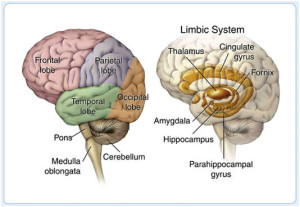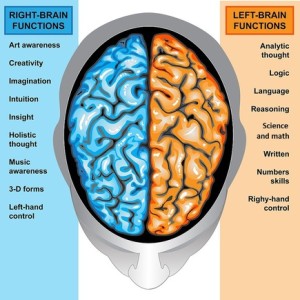
The cerebellum – The cerebellum is one of the most identifiable parts of the brain due to its unique shape and location. It is extremely important for being able to perform everyday voluntary (done with purpose and intent) tasks such as walking and writing. It is also essential to being able to stay balanced and upright. Patients who have suffered from damaged cerebellums often struggle with keeping their balance and maintaining proper muscle coordination.
THE BRAIN STEM: Often the midbrain, pons, and medulla oblongata are referred to together as the brainstem (Anatomy top & below with pons).
The brainstem is the region of the brain that connects the cerebrum with the spinal cord. It consists of 3 parts being the midbrain, medulla oblongata, and the pons. Overall the midbrain has many functions for such a small organ part of the brain. The motor and sensory neurons travel through the brainstem allowing for the relay of signals between the brain and the spinal cord. The brainstem coordinates motor control signals sent from the brain to the body. The brainstem also controls life supporting autonomic functions through the autonomic nervous system that is a sub-division of the peripheral nervous system. The peripheral nervous system (PNS) is the part of the nervous system that consists of the nerves and ganglia outside of the brain and spinal cord. The main function of the PNS is to connect the central nervous system (CNS) to the limbs and organs, essentially serving as a communication relay or sending messages going back and forth between the brain and the extremities. The peripheral nervous system is divided into the somatic nervous system and the autonomic nervous system. The autonomic nervous system influences the function of internal organs. The autonomic nervous system is a control system that acts largely unconsciously in regulating bodily functions such as the heart rate, digestion, respiratory rate, pupillary response, urination, and even sexual arousal at times but to do these functions messages have to reach the brain which send messages back to areas of the body do these bodily functions and this is where the brain stem comes in sending messages to the brain and the relay back out through the peripheral nervous system=autonomic nervous system and also through the spinal cord. The stem has a function also with alertness.
The midbrain also called the mesencephalon is the portion of the brainstem that connects the hindbrain and the forebrain. Its function is for controlling responses to sight.
The medulla oblongata is easily the most important part of the brain. It’s functions are involuntary, or done without thought. This where those unconscious actions of our body comes into play that where mentioned above. We would not be able to live without the medulla because of the myriad of crucial tasks it performs including pulse, regulating blood pressure and breathing. As a part of the brain stem, it also helps transfer neural messages from the brain to the spinal cord.
The pons serves as a message station between several areas of the brain. It helps relay messages from the cortex and the cerebellum. Without the pons, the brain would not be able to function because messages would not be able to be transmitted, or passed along. It also plays a key role in sleep and dreaming, where REM sleep, or the sleeping state where dreaming is most likely to occur, has been proven to originate here, in the pons.
Tune in Friday for the last part of how the brain works Part 3 covering the functions of the brain on the right and left side with more.

